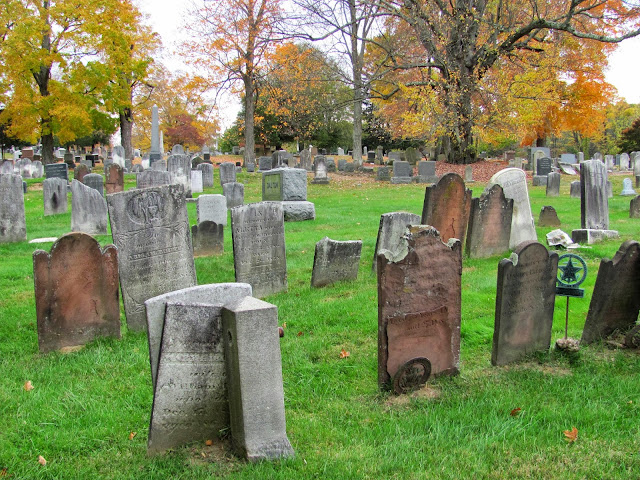St. Peter's Episcopal Church, pictured above, was the one church we saw that actually dated from the period of its earliest stones. It was built in 1766 (St. George's was built in 1761) and is only slightly smaller than St. George's was (28' x 36' versus 30' x 40'). What's more, I think it probably reflects the character that St. George's would have had as a simple country church way out in the wilderness of Westchester County.

Like St. George's, St. Peter's also served as a military hospital during the Revolutionary War. While some of Rochambeau's soldiers may have been buried at St. George's, eight named soldiers of Rochambeau's army were definitely buried at St. Peter's.
Other interesting comparisons between St. George's and St. Peter's: St. Peter's has a granite foundation, and all of the rocks we have found in STP 3 (the possible foundation wall) are granite; St. Peter's roof has slate shingles, and slate shingles have been found in Feature 1. We have been working off the assumption that the foundation wall in STP 3 and the artifacts from the dry well all represent material from St. Mark's Church, but we don't know that for certain. Given the inclusion of eighteenth-century artifacts such as pottery and the gunflint, it is possible that they are from St. George's.
Also, as at St. George's/St. Mark's, a lychgate was added beside St. Peter's Church in the nineteenth century.
For all of these reasons, St. Peter's offers perhaps the best chance to understand what St. George's would have looked like and how the graves would have been placed in relation to it.

The graveyard at St. Peter's is much larger than St. George's/St. Mark's. The eighteenth-century gravestones are located in the back and to the side of the church, and all face the same direction as the church's entrance. The closest stones are located only a few feet away from the church, and the farthest are dozens of yards away. As at the First Presbyterian Church, the orientation of the first stones seems to have set the precedent for all later stones.
St. Peter's Cemetery also has a stone that is a dead ringer for Deborah Haight's:
As we explored the cemetery we came across the old receiving tomb, dated to 1888. To our horror, there was an old sandstone grave marker embedded in one of its walls (shown below, with the distinctive ridged pattern visible). The Victorians could be a pretty disrespectful bunch. I suppose we're not much better, though - I forget who it was who recently told me about a walkway he or she saw that was paved with eighteenth-century sandstones ...

Here's one last shot of St. Peter's Church and cemetery. I forgot to mention one more similarity between St. Peter's and St. George's - they are both Episcopal. I don't know enough about eighteenth-century churches to say whether that would have influenced the layout and design of the church and cemetery - any more than it would if they were Presbyterian or Baptist, that is - but it may turn out to be important.





No comments:
Post a Comment